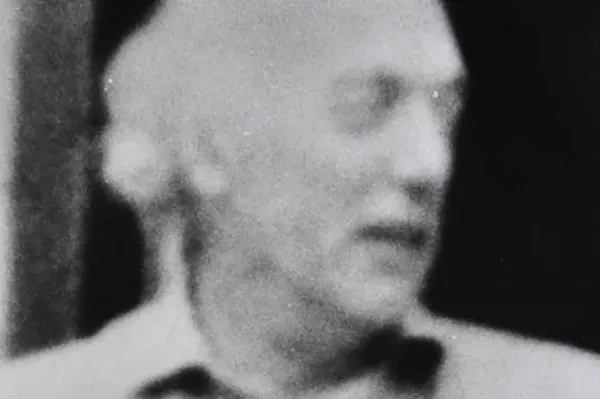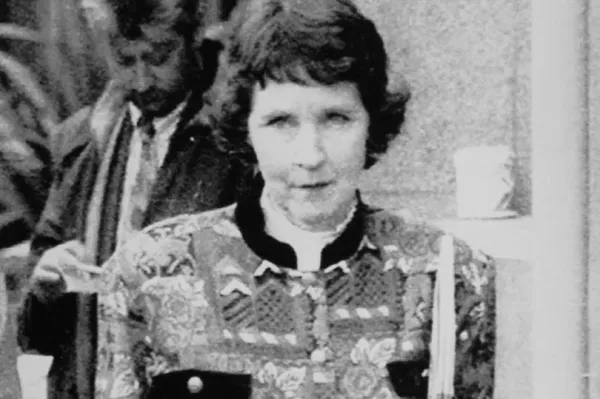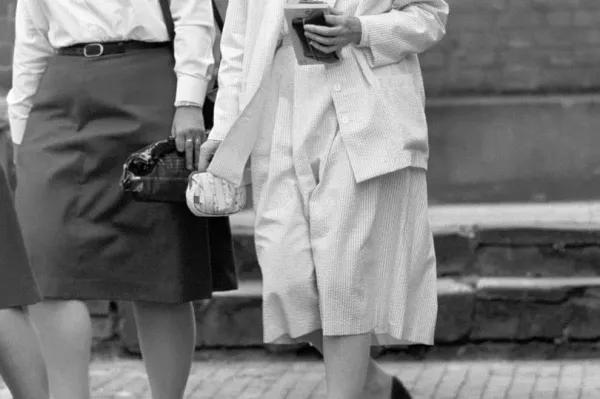
Nicknamed the “murder in the mansion”, the killing of a wealthy architect found at his 50-room mansion still remains an unsolved mystery till this day. The investigation into who killed the architect uncovered foul-play, fraud and a member of an aristocratic family whose fortune was stolen from underneath their nose by a sinister and scheming baroness.
Like the location of the stolen fortune, the identity of the individual who committed the “murder in the mansion” still remains an open wound in history. Simon Dale, 68, a partially-sighted recluse, was found bludgeoned to death in his remote countryside mansion in September 1987.

Police soon launched a murder investigation into the murder at Heath House in Hopton Heath, Shropshire. The primary suspect was Dale’s former wife, Baroness Susan de Stempel, from the wealthy Wilberforce family and the great-great-granddaughter of anti-slavery campaigner William Wilberforce.
- Teen woke to find she was being raped by man as his partner held her down
- Celebrity Traitors first look as BBC 'lets slip' first Traitor in shock move
The Baroness met her estranged husband in 1959 when he was 15 years her senior. Together the couple used her money to buy the massive Jacobean mansion house for £50,000 in 1972. Despite the couple moving into Heath House and having five children by the end of the 1960s, the marriage ended in divorce in 1973.
After the divorce, the baroness failed to secure the sale of the 50-room mansion and her ex-husband continued to live at the property. Dale continued to work meticulously on his theory that the legend of King Arthur had connections to the mansion. Susan took her title from another marriage in 1984 after she married Baron Michael de Stempel. However, the couple split up less than a year later and were divorced in 1986.

Baroness Susan de Stempe was charged with both murder and manslaughter of retired architect Dale and was taken to court in 1989. The police theory alleged the Baroness finally snapped and battered Dale to death in the kitchen of his home, murdering him with a crowbar as a result of the 14-year feud over the 50-room mansion.
At the trial the baroness claimed her relationship with Dale was filled with issues. She said: ''He was very sexually active and very aggressive, but it certainly wasn't loving. He simply needed sex to satisfy himself.'' She alleged Dale was a terrible father and an awkward man. She alleged he had smacked their four boys with great force during their childhoods and never showed them or their daughter any kind of affection. Alongside this the baroness’ defence also claimed she had seen him wearing women's high-heeled shoes and lipstick.
Police said the baroness remained utterly calm and detached during the trial. Witnesses added she conducted herself in a manner that appeared like she thought she was above everyone, even treating prosecuting counsel and the judge with contempt. Due to insufficient physical evidence the charges could not be upheld and Baroness Susan de Stempe walked.
While police were investigating the murder, officers caught wind of another conspiracy in the works. Investigators uncovered a plot by the baroness to fleece her elderly dementia stricken aunt, Lady Margaret Illingworth, out of £500,000 during the last years of her life. When the baroness invited her elderly aunt to Herefordshire for a holiday in 1984, little did the old lady know her will would be forged and the "holiday" become permanent.
Within weeks the aristocrat's considerable fortune money, gold bars and valuable paintings had all disappeared from underneath her nose. The increasingly senile widow was then moved into a nursing home where she died in 1986 aged 84.

None of her family, except the baroness, knew of Lady Illingworth’s death until months later. When news of the death broke she had been cremated – despite the heartbreaking fact she had wanted to be buried at her husband's side. Her funeral bill went unpaid and after no one collected her ashes, they were scattered over a garden of remembrance.
In 1990 a court heard about the state the penniless Lady Illingworth died in, a stark contrast to the glittering life she had led in 1930s London. During the police investigation into the case, a witness told detectives of once seeing a pyramid of gold bars at Lady Illingworth's London home shortly before she moved out in 1967.
In 1990, the 56-year-old Baroness was convicted of stealing more than £500,000 from her aunt Lady Illingworth and jailed for seven years, despite this, the bullion of gold belonging to Lady Illingworth was never found. To this day detectives are adamant there was only ever one suspect for the murder of Simon Dale, his ex-wife Baroness Susan de Stempel. Like the location of Lady Illingworth's stolen fortune, the identity of Simon Dale’s killer still remains an unsolved mystery.
-
Ways to get relief from sore throat and sneezing in winter

-
If you do not apply these 4 things before applying lipstick in winter, your lips will get spoiled, know these important things.

-
Ticket Booking New Rule 2025: Ticket booking rules will change, now these people will not be able to book tickets

-
If there is frequent itching in the feet, do not ignore it, it is a sign of this dangerous disease.

-
Are you also playing with your stomach by eating new rice?:
